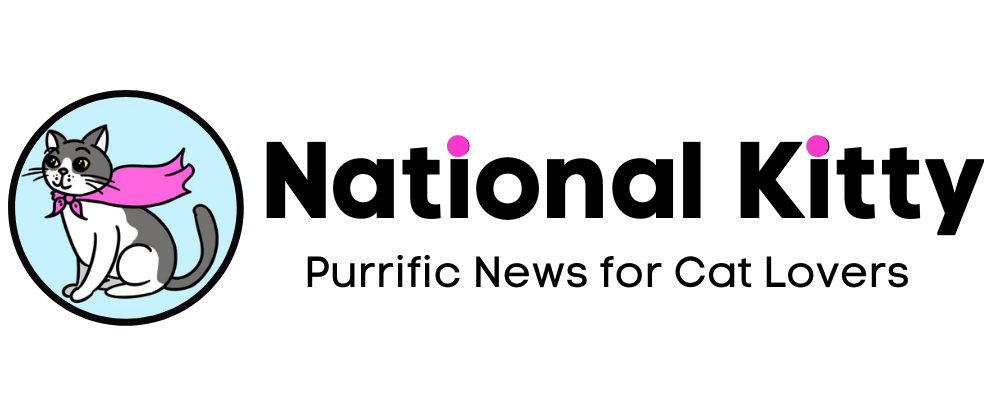Did you know your cat’s dental hygiene can determine how long they live?
Everyone knows teeth are important to cats for eating and protecting themselves. Just like humans, if cats don’t have good dental hygiene then they start to develop dental disease.
Dental disease is the silent killer – and you can avoid it by making sure your cat has good dental hygiene.
Keep reading to learn 6 ways prevent your cat from getting dental disease.
What is Dental Disease?
Dental disease is inflammation of the support structures around the teeth. This is by far the most common cause of tooth loss among cats.
Did you know dental disease can lead to systemic illness and other health complications? Dental disease is the most commonly diagnosed health issue for cats.
According to the American Veterinary Dental Society, 70 percent of cats start showing signs of dental disease by age 3.
Here’s How Dental Disease Starts:
- It begins when bacteria form plaque on the teeth.
- Within just a few days, minerals in saliva join with plaque to form tartar, a hard substance that sticks to the teeth.
- Bacteria begin to work their way under the gums and lead to inflammation of the gums, also known as gingivitis.
- Once the bacteria work their way under the gums they destroy the supporting tissues and ligaments around the teeth, leading to tooth loss.
Why is it so dangerous?
Bacteria associated with dental disease can travel in the bloodstream and infect the heart, kidneys, and liver. This is why dental disease, though seemingly confined to the mouth, can have affect a cat’s entire body.
In humans, it can be compared to oral cancer from chewing tobacco. Although the main area affected is the mouth, the cancer spreads from the mouth to the rest of the body through the bloodstream.
This is a crude comparison, but serves to show how disease can spread from one part of the body to another.

How to Tell Your Cat Has Dental Disease
Healthy teeth should be white or slightly off white. Gums should be light pink and feel smooth; however, there are exceptions to this- some breeds of cats have naturally darkly pigmented gums.
Dental disease begins with plaque and tartar building up in the mouth. This buildup may cause signs of dental disease which include:
- Bad breath. A slight fishy smell from your cat’s mouth, known as “kitty breath” is normal, but a strong, foul odor is a sign of dental disease.
- Redness or bleeding from the gums
- Drooling
- Difficulty chewing (this may look like messy eating)
- Pawing at the mouth
- Loss of appetite
- Loose or missing teeth
- Facial swelling
- Nasal discharge
Dental disease can often lead to pain associated with swelling and inflammation of the mouth.
When cats are in pain they will often mask it and show no signs, but you should be aware that dental disease can and often does lead to pain and discomfort.
If you’d like to find out of your cat has dental disease or is at risk for dental disease, consult with your veterinarian. They have the skills and expertise to make an accurate diagnoses and offer treatment options.
Affected Breeds:
All breeds of cats are affected by dental disease. Some purebreds appear to be more affected by dental disease.
Abyssinian cats in particular are known to be affected by dental disease more than other breeds.
How to Prevent Dental Disease:
1. Yearly dental cleanings: in most cases your cat should have his/her teeth cleaned yearly to prevent significant plaque and tartar buildup.
This is the bare minimum – some cats need their teeth cleaned more often. Ask your veterinarian to find out how often your cat should be getting their teeth cleaned.
2. Brush your cat’s teeth: This is the best way to prevent dental disease. Make sure you are using a toothpaste and toothbrush that are specifically made for animals.
Human toothpastes often contain ingredients that are harmful to your cat if swallowed.
The Virbac C.E.T Oral Hygiene Kit is veterinarian recommended and has a great reputation as a safe, effective oral hygiene product.
Here is a video that will show you how to brush your own cat’s teeth.
**PRO TIP** I trained my own 2 year old cat, Homer, to let me brush his teeth by first putting his chicken flavored, cat safe toothpaste on his favorite treats and letting him get used to the flavor.
Then I progressed to letting him lick a small amount of the toothpaste off my finger.
When he was comfortable with that, I began to rub the toothpaste on his gums with my finger for as long as he would let me and would then reward him with treats.
This took us several weeks, but now Homer looks forward to having his teeth brushed and won’t let me go to bed without it.
3. Dental Treats: If you have an older cat that is not cooperating with the toothbrush, the second best option is to give them specialized dental treats.
Consult your veterinarian about the best option for your cat’s dietary and caloric needs. My dentist highly recommends Virbac C.E.T. Oral Hygiene Treats, pictured below.
It is best to start teeth brushing with kittens, but even adult cats can be trained to have their teeth brushed. They may not like it very much at first, but they’ll get used to it. Just remember, you’re helping them live longer!
4. Chew toys: there are many chew toys available for cats, and these can help clean your cat’s teeth while also providing them with a fun, stimulating activity.
There are even chew toys available that can be stuffed with treats to keep your cat entertained for hours.
5. Prescription food: special foods are available for cats with severe dental disease or as an addition to a preventive protocol. Ask your veterinarian if this is an option that should be considered for your cat.
6. Oral rinses/water additives: these are additions to a preventive program, but alone they are not enough to prevent plaque and tartar buildup.
When choosing products for your cat’s dental health, make sure they have the VOHC stamp of approval. The VOHC is the Veterinary Oral Health Council, and products with their approval have been clinically shown to reduce plaque and tartar.
**DANGER ALERT** There is a lot of advice on the internet about giving your cats raw bones to prevent dental disease because this is what they would chew on in the wild to prevent it. However, this is NEVER good idea.
Raw bones can lead to choking, an upset tummy, diarrhea, and even gastrointestinal obstructions. Raw bones can also lead to foodborne illness such as E. coli, Salmonella, or Botulism. This can even be spread to you or your family members.
- RELATED: 5 Simple Ways To Help Your Cat Live Longer
- RELATED: 4 Reasons Your Cat Desperately Needs Insurance
How To Treat Dental Disease:
Ask your veterinarian. He/she will likely recommend sedating your cat for a comprehensive oral health assessment and treatment (COHAT) – often known as a dental cleaning.
During this procedure your veterinarian will fully check your cat’s mouth and teeth and scale and polish the teeth. He/she will also extract any diseased teeth.
It may seem scary to think of your cat losing teeth, but a veterinarian will NEVER pull healthy teeth.
Extractions are only performed when the tooth is beyond saving and is only causing pain and is a breeding ground of infection for your cat.
It is also important to ask your veterinarian to test your cat for common diseases such as Feline Immunodeficiency Virus (FIV) and Feline Leukemia Virus (FeLV) which can often times lead to inflammation and infection of the mouth.
Your veterinarian may also prescribe antibiotics or pain medications depending on the extent of the infection.
After your cat has his or her teeth cleaned it is important to follow it up with good preventive dental care to keep infection from recurring.
Patience Pays Off
Remember, cats won’t always like having their teeth cleaned. They might even get mad at you and throw a fit.
But this is a sacrifice all cat owners must make to help their kitties have a long, healthy life!






Marianne Hays
Friday 3rd of January 2020
My other kitty is female. Her name is Jasmine.
Darlene Trejo
Sunday 21st of July 2019
I found in my cats rhey also leave the tips of their tongues hanging out when they have dental issues. I used to run a cat rescue so i have ovserved many cats.